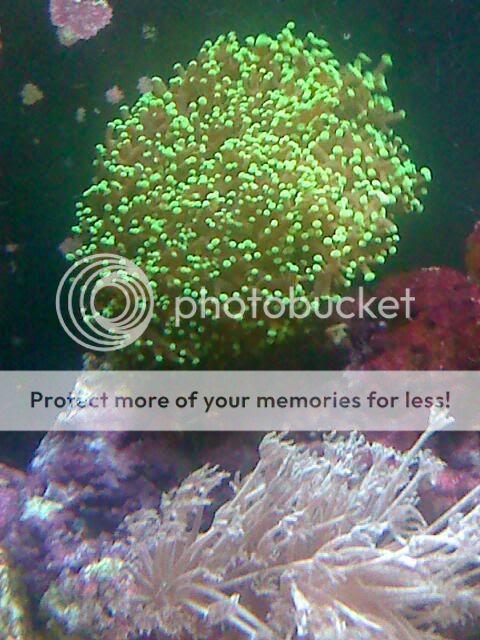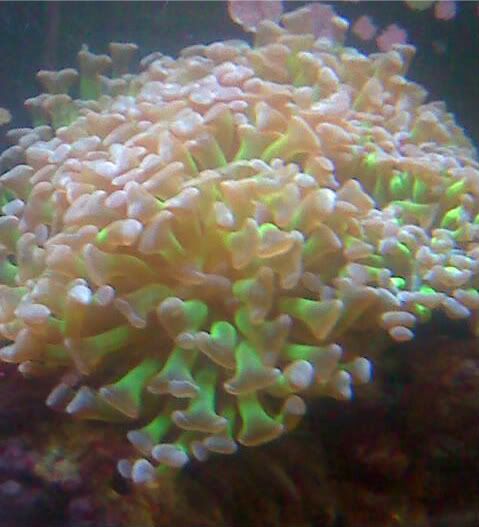So what does Eric Bourneman have to say about the truly gorgeous Euphyllia genus
Sweeping Beauty A tale of anchors, hammers, and other things By Eric Bornemn
The Euphyllia Corals
Subclass: Zoantharia Order: Scleractinia Family: Caryophyllidae Genus: Euphyllia Species: ancora , cristata , glabrescens , divisa , paradivisa , parancora , yaeyaensis , etc
There is no way to adequately cover all the members of the genus Euphyllia in a single article. Perhaps I should quit now?
The anchor coral, Euphyllia ancora
Besides being very common imports to the aquarium hobby, it seems that everyone begins their forays into the world of stony coral keeping with this coral. If it isn't "baby's first stony," it is certainly the second or third coral in the tank. The reason for this is obvious; they are hardy, beautiful, and interesting corals. So if everyone has them, and they are easy to keep, why discuss them? Because they have some unusual traits and characteristics, that's why!
The most well known Euphyllia is what is commonly called hammer or anchor coral. The species is Euphyllia ancora. Although it is still commonly given the species name of E. fimbriata, this is a now extinct designation.
(1) Oddly enough, there are references in taxonomic literature to a feature that was thought to be a species difference between ancora and fimbriata . Classification of corals is based predominantly on skeletal characteristics, although living tissue can and does play a role in some classifications.
(2) This feature was that fimbriata species had T-shaped tentacle or polyp ends while ancora's were curved, or anchor shaped. While differences occasionally exist even within the same specimen, there is a very distinct pattern of examples with both end types. The polyps of all species can be either brown, greenish or slightly pinkish, with variations of the three common even within the same example.
Euphyllia divisa , like E. ancora , has a solid non- branching (flabellomeandroid) skeleton. It has multi-round tipped ends to its tentacles, giving its appropriately characteristic name of Frogspawn coral.
There are, however, at least four separate species of Euphyllia that have branching (phaceloid) skeletons. These are E. parancora , E. paradivisa , E. glabrescens , an E. cristata . The polyp tips are anchor, multi-round tipped, single round tipped and hammer shaped, respectively.
Having described the various forms that the hobbyist may happen across in his local pet store, I now feel a need to warn everyone about these corals!
They are KILLERS!
The Clean Sweep Sweeper tentacles are specialized tentacles that extend further than the other normal feeding polyps of a coral. There are many corals which seem to possess this capability, but Euphyllia is conspicuous. The sweepers are noted for having more numerous and powerful nematocysts, which allow them to adopt a very powerful aggressive or defensive posture relative to other corals. Because of the intense competition for space on the reef, many corals have adopted methods by which to "stake a claim," and allow room for growth and expansion. These specialized tentacles are very adept at this purpose. Not only do the Euphyllia species form sweeper tentacles, they can form many long powerful sweeper tentacles. Oh sure, Galaxea is known for its sweeper tentacles, but those are mere long thin threads. The sweepers on Euphyllia and like spring loaded jack hammers. They can extend outwards up to 8 inches or more from the rest of the tentacle mass. If these tentacles come in contact with other corals, the nematocysts are numerous and strong enough to allow the end of the tentacle to stick to a nearby coral and remain there, causing significant localized damage. In fact watching a sweeper attach and kill a neighboring coral is similar to a lethal injection , with the coral pumping the nematocyts' poison like a deadly slow drip IV line into anything close enough to reach.
It seems that any tentacle can differentiate and adopt this specialized form.
Despite some reports that merely taking a scissors and snipping of the sweepers is an effective way to get rid of them, it has been my experience that this is a temporary and fruitless endeavor. More sweepers will be formed in their place, and consistent snipping of living tissue always poses a risk of losing the coral to a resultant infection. Therefore, I feel the best solution is to place any Euphyllia species well out of contact range with any other corals. It may be noted, though, that with the exception of E. glabrascen s, all Euphyllia species may be placed near each other, as they do not seem to have any negative interactions between species.
Captive reproduction of most Euphyllia species is by budding of daughter colonies around the base of the parent or by separation of a colony from the living tissue edge around the septa. Sexual reproduction occurs in the wild, and has been documented in captivity, as well.
Aquarium Care
My first stony coral, as with many people, was a hammer coral. It has survived through many moves, sometimes awful tank conditions, and continues to grow and prosper. Thus, it can be said that this is a fairly hardy coral.
Most Euphyllia species are fairly light tolerant and adapt to most lighting regimes. I have found that while they prefer bright light, excessively intense light can cause a marked retraction of the polyps. Sometimes, this is an adaptive response, but these corals can become light shocked and die. Therefore, care is necessary when introducing them to a new tank or increased lighting.
In terms of water movement, they are slightly more specific. A forceful and especially linear current will prevent the polyps from fully opening. Likewise, a stagnant current will not allow for full expansion. I have found that good lighting and random current seems to allow for the best growth and expansion of the different species. However, these are the same conditions that allow for the development of the sweeper tentacles. I have also had several Euphyllia species that seemed to become very specific in their placement requirements. Initially, they were flexible, and seemed happy in a variety of locations. After some time, though, if I attempted to move them to what seemed to be a very similar position in the tank, they failed to thrive. I am not sure if others have noticed this, but I would be very interested to hear from anyone who has made the same observations.
In terms of generally adaptability, it seems as though the non-branching species are slightly hardier in the aquarium. E. glabrascens , or Torch coral, seems to be the most sensitive and fragile. In many of the branching species, there may be branches where there is no living tissue. This is usually a sign of either improper collection or a natural loss of tissue. However, the remaining branches, if healthy, will not be affected and the "empty" branches are not indicative of a sick coral. In non-branching species, there may also be areas of tissue loss from the skeleton. Although these specimens are usually broken off larger colonies and can heal well, it is my experience that tissue loss within the same colony (septa) can be the site of algae encroachment and lead to either a failure to thrive or eventual demise.
Euphyllia corals can also be the subject of what are known as brown jelly infections. Most fleshy corals seem especially prone to these infections. Colonies of protozoans, (especially Helicostoma ), and other microfauna invade an area of injury or infection. They consume the tissue and in so doing, inadvertently cause further tissue degradation. It seems as if these organisms are merely at the site of problem, and do not actively attack an otherwise healthy coral. However, the loss of the coral is eminent if the infection is not treated. Treatment of coral disease is not well established. For brown jelly infections, it is best to siphon off the jelly or brush it off with a soft paintbrush...outside the tank! A freshwater dip is sometimes recommended, and I have treated a number of corals this way without problems. However, the dip should be quick since these simple organisms have thin tissue layers that are easily damaged by freshwater and their cells tend to burst from any lengthy osmotic changes. An alternative is to use a small amount of an effective broad spectrum saltwater antibiotic like Neomycin sulfate. The antibiotic should be mixed with a small amount of water to make a paste which is then lightly brushed along the affected area. I have had what I suppose would be considered fairly good success and reports of success from others using this method. The localized use of small amounts of antibiotic should not be overly harmful to the biologic filter of any but the smallest tanks, but caution and water monitoring is necessary. It is always better, of course, to use any medications in a hospital or quarantine tank, provided that tank has excellent water conditions that allow for better recovery. There is no sense in isolating any organism in a separate tank, simply because it is separate, if the conditions do not allow for the best recovery in a stress free environment. Less than ideal conditions may exacerbate a problem and actually cause other problems that may, in fact, be more detrimental than no treatment at all.
Another method of treatment that is often more effective in stony corals is what can be termed the "geo-surgeon: method of cutting out the affected area. This is easier with thin branched species, but apparently massive skeletal corals can be treated the same. The use of appropriate tools to avoid unnecessary damage is emphasized. I have, thankfully, never had need to excise damaged tissue from a solid coral, but I have been told that metal shears, hack saws, wire cutters, hammers and chisels are all used. In the event that this becomes necessary, one should carefully cut into just a bit of healthy tissue, slightly ahead of the encroaching disease.
Finally, outside the obvious necessity of providing a high calcium content water to any exhibit housing stony corals, the addition of strontium is beneficial in that it helps to keep the entire tissue of Euphyllia from becoming detached from its skeleton. This happens fairly regularly with these and other similar corals.
A Final Note on Euphyllia
Recently, I have been getting a number of reports from people all over the country who are having problems with their hammer corals. I cannot say whether these reports are indicative of exclusively hammer corals, because I can neither verify the species or be sure of the proportion of hammer corals compared to other Euphyllia species that hobbyists may be having problems with keeping. I also cannot be completely sure whether or not I am just hearing from more people lately, but the number of problems in the past six months seem to deserve a bit of a warning. I have become aware of a diverse group of people who seem to have well established aquariums with reportedly excellent water conditions. They all have expressed problems with recently purchased hammer corals who are not adapting to tank conditions, are failing to expand, and begin to die. The death seems to be a general demise, much like the reaction most people see with Goniopora .
Euphylia glabrescens The torch coral, also called anemone coral by collectors because of its resemblance to the anemone Heteractis magnifica
There is no identifiable signs of disease, pestering animals or injury, lighting and current data seem acceptable, and no bleaching has occurred. All attempts to save the coral have failed. I cannot in any way ascertain what is happening, but it occurs to me that these corals may have begun a demise from the point of collection through improper collection, handling, and holding techniques. Since the location/source of the affected corals cannot be pinpointed, it is hard to say if this theory holds true. It has been disconcerting, though, to hear of so many people having problems keeping these relatively durable corals in captivity in recent months.
The solution to this apparent rash of dying hammer corals is one of common sense. Anyone purchasing livestock should make every attempt to make sure that the livestock dealer/supplier is of the highest ethical character, that they do not support suppliers/collectors who practice improper collection techniques, and that the welfare of their captive stock is of the highest priority. Most stores who fit this description are all too happy to talk about these facts, whereas disreputable stores are generally evasive in their answers.
A Lesson to Be Learned It has been shown that Euphyllias need their space, and that they can jeopardize neighboring corals . They also grow well in captivity, and may become substantially larger in just a few years. This brings up an important point.
Although they do occur in other areas, Euphyllias are found primarily in lagoons which makes their hardiness understandable. Knowing its propensity for growth, sweeper tentacles, and the space it will thus require, it makes sense to plan for this when purchasing this coral. In fact, careful thought should be given to each livestock purchase, to make sure that it is a compatible, keepable, and natural addition to the reef tank.
In the past, we have all been so excited to just be able to keep corals alive and growing in our reef aquariums. We have begun to learn about the incompatibilities of species, if not only in terms of crowding and growth. For example, some species of soft corals are quite incompatible with other species of hard corals. This should not be surprising, since they often come from very different areas of the reef, and often various parts of the world. Similarly, the excessively crowded "show" tanks that seem to adorn so many publications are incredible feasts for the eyes, but is such intimate crowding of species realistic or appropriate? Not in my opinion. Coral coverage on most reefs is on the order of 30 to 40 %, with the rest composed of sponge, coralline algae and other growth forms. So should it be on our personal reefs. Not too many years ago, this crowding of various species from many diverse locations was evident in freshwater tanks. Now, however, most people choose to keep Cichlid tanks only, even delineating them to African cichlids or Lake Tanganika cichlids or Discus tanks.
I believe the time has come for this practice to begin with reef tanks. The days of simply impulse buying a coral because it is pretty should hopefully be nearing an end. Although it is possible to keep many different species together in the same tank, it is much more "correct" to learn which species are compatible and are from similar habitats. This is important not only to maintain proper biodiversity and to ensure a greater chance of success, but for a better aesthetic appeal, as well. The time to start is now.
Eric Borneman
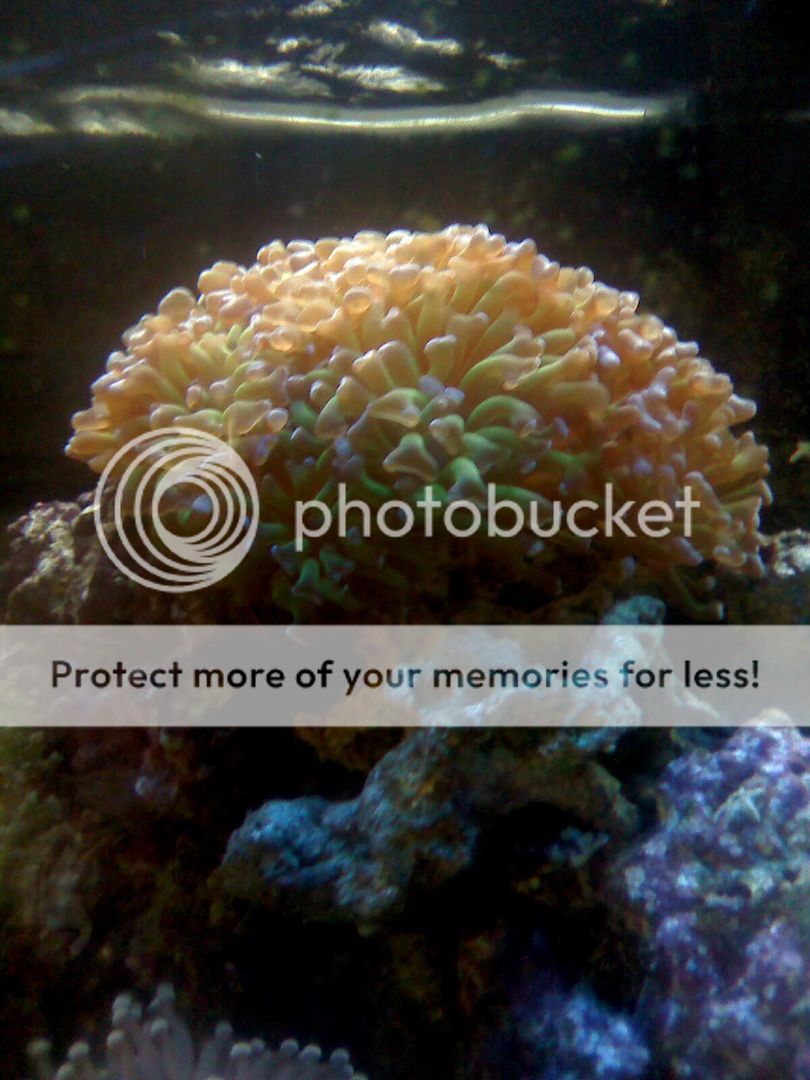



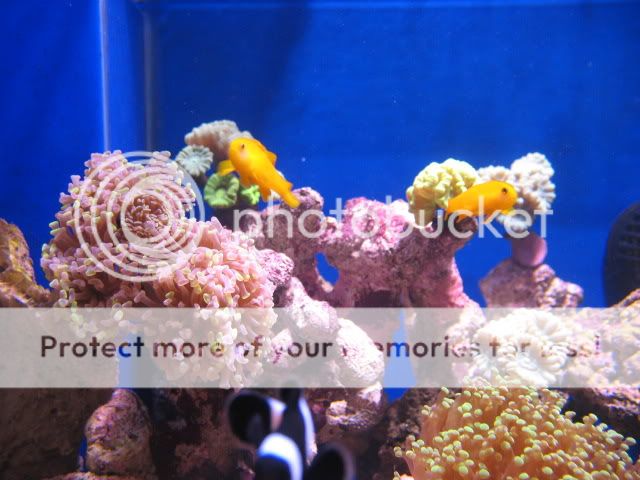
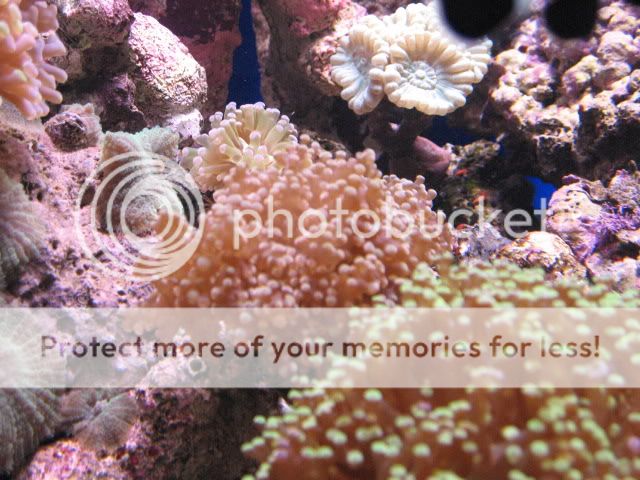
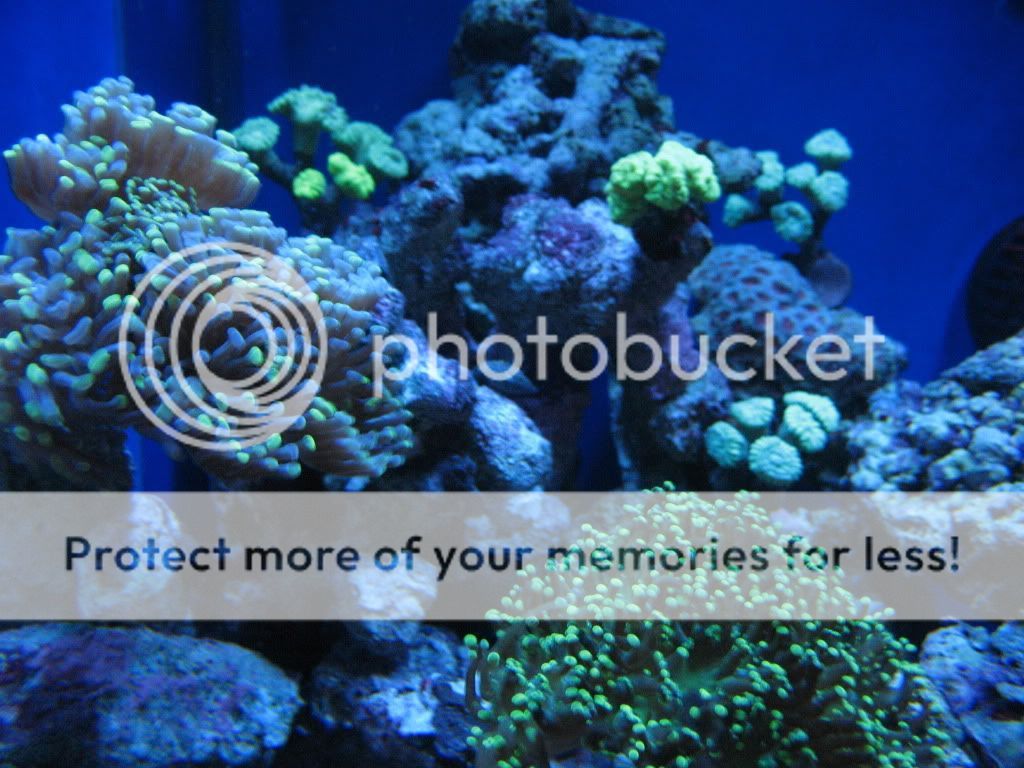

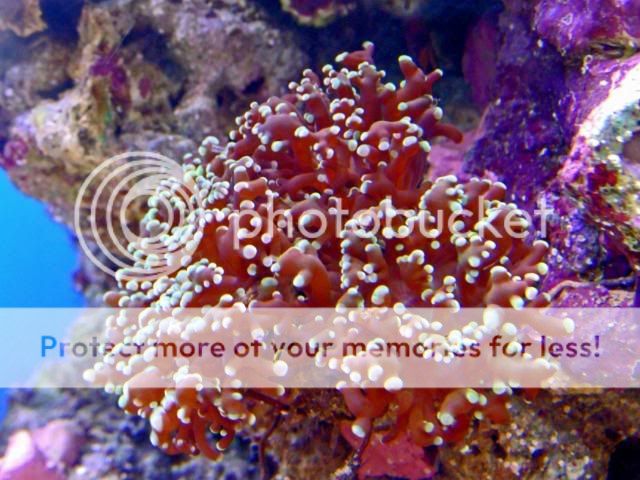
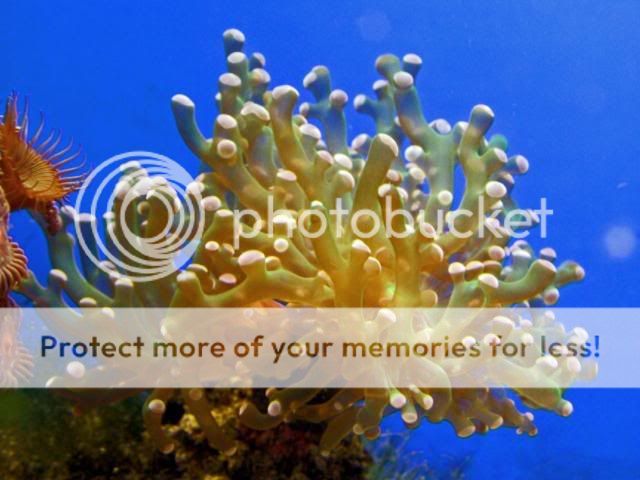
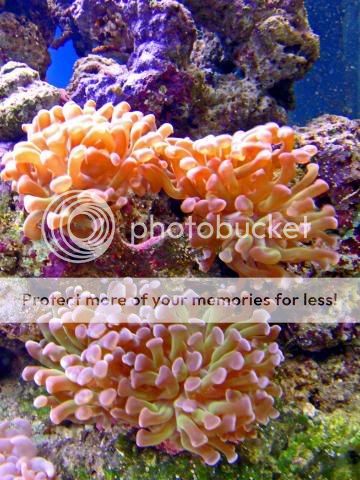
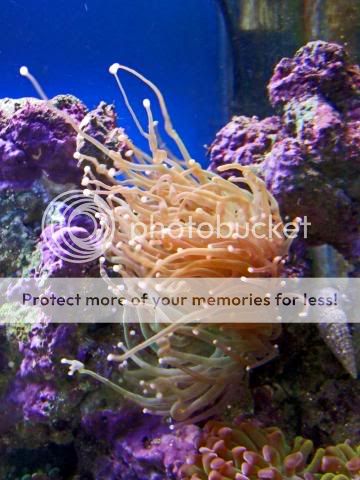
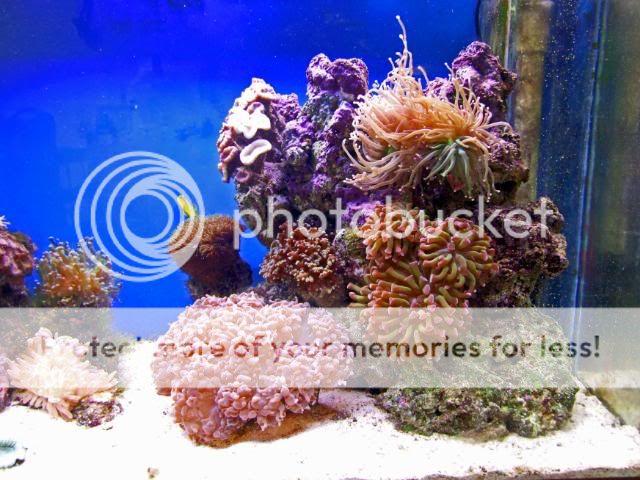
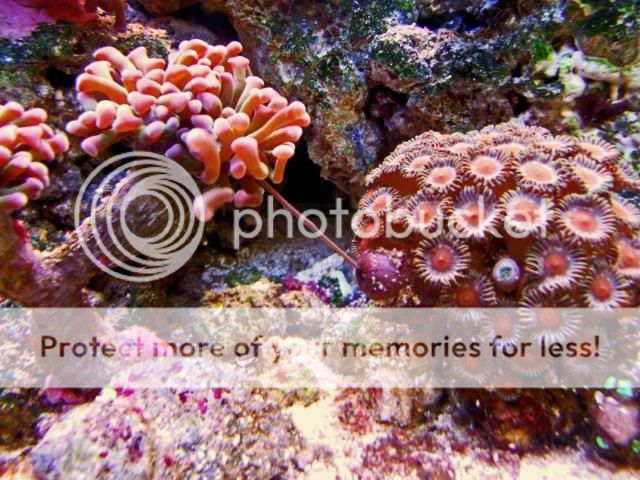
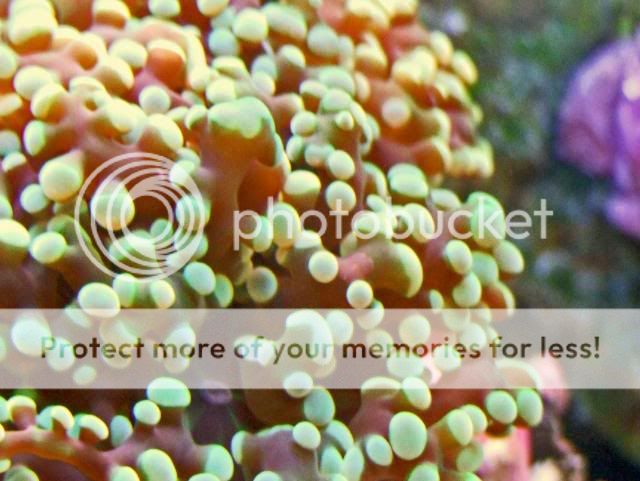
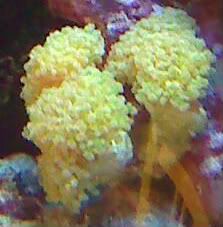
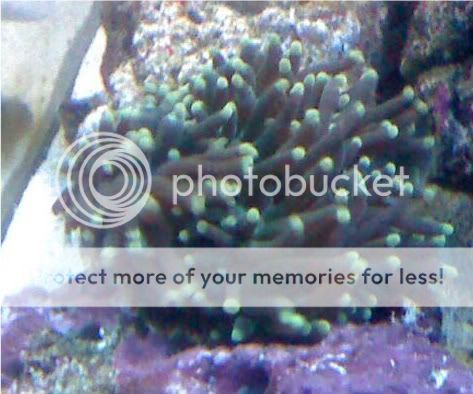
 the one casualty of my tank move
the one casualty of my tank move